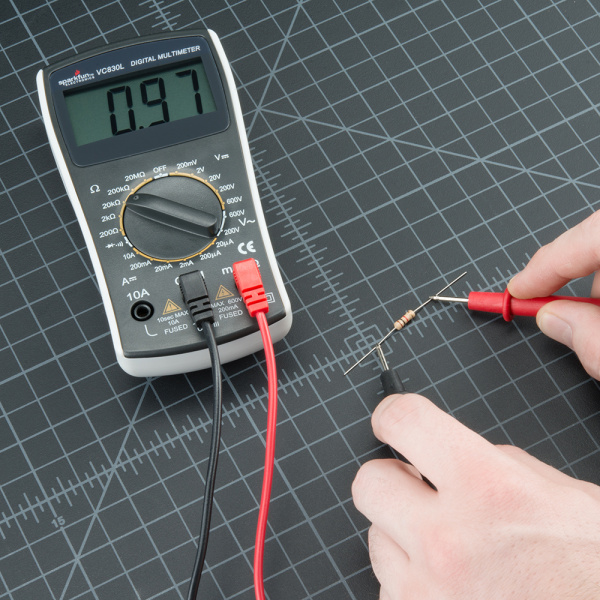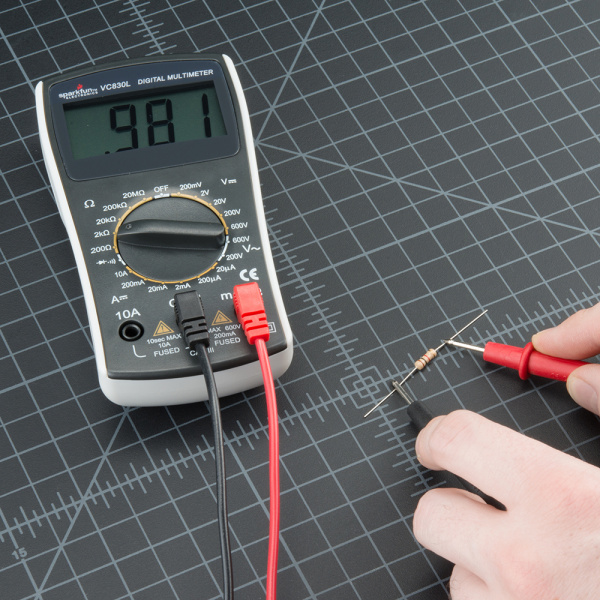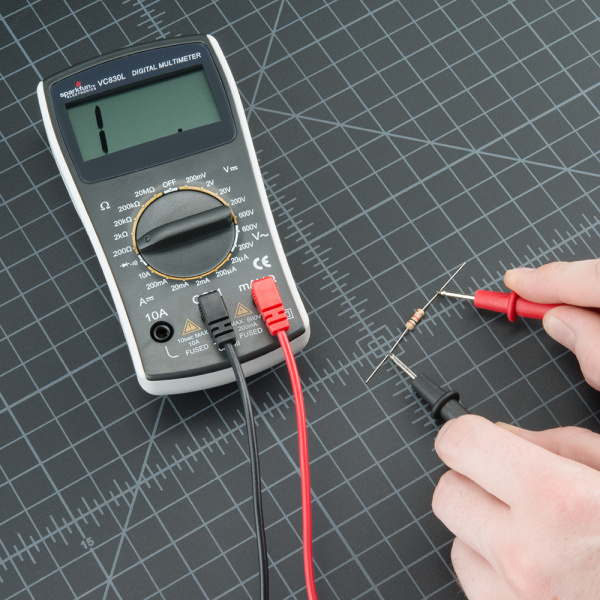How to Use a Multimeter
Measuring Resistance
Normal resistors have color codes on them. If you don't know what they mean, that's ok! There are plenty of online calculators that are easy to use. However, if you ever find yourself without internet access, a multimeter is very handy at measuring resistance.
Pick out a random resistor and set the multimeter to the 20kΩ setting. Then hold the probes against the resistor legs with the same amount of pressure you when pressing a key on a keyboard.
The meter will read one of three things, 0.00, 1, or the actual resistor value.
In this case, the meter reads 0.97, meaning this resistor has a value of 970Ω, or about 1kΩ (remember you are in the 20kΩ or 20,000 Ohm mode so you need to move the decimal three places to the right or 970 Ohms).
If the multimeter reads 1 or displays OL, it's overloaded. You will need to try a higher mode such as 200kΩ mode or 2MΩ (megaohm) mode. There is no harm if this happen, it simply means the range knob needs to be adjusted.
If the multimeter reads 0.00 or nearly zero, then you need to lower the mode to 2kΩ or 200Ω.
Remember that many resistors have a 5% tolerance. This means that the color codes may indicate 10,000 Ohms (10kΩ), but because of discrepancies in the manufacturing process a 10kΩ resistor could be as low as 9.5kΩ or as high as 10.5kΩ. Don't worry, it'll work just fine as a pull-up or general resistor.
Let's drop the meter down to the next lowest setting, 2KΩ. What happens?
Not a whole lot changed. Because this resistor (a 1KΩ) is less than 2KΩ, it still shows up on the display. However, you'll notice that there is one more digit after the decimal point giving us a slightly higher resolution in our reading. What about the next lowest setting?
Now, since 1kΩ is greater than 200Ω, we've maxed out the meter, and it is telling you that it is overloaded and that you need to try a higher value setting.
As a rule of thumb, it's rare to see a resistor less than 1 Ohm. Remember that measuring resistance is not perfect. Temperature can affect the reading a lot. Also, measuring resistance of a device while it is physically installed in a circuit can be very tricky. The surrounding components on a circuit board can greatly affect the reading.


